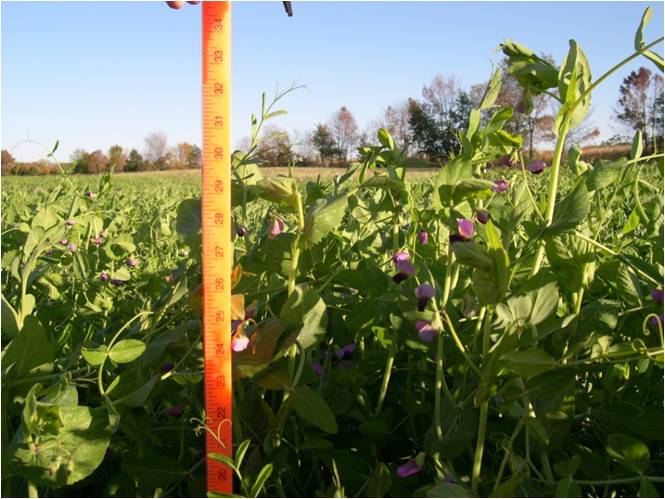This article was originally posted on December 14, 2010.
Benefits of Mustard
Mustards are a good cover crop for a variety of reasons.
One of the main benefits is that they have high levels of glucosinolates. According to Cornell University:
The practice of using mustard cover crops to manage soil-borne pathogens is known as biofumigation. Biofumigation is simply the suppression of various soil-borne pests and diseases through naturally occurring compounds. All brassicas such as cabbage, kale, cauliflower, brussel sprouts, broccoli, mustard, and turnips naturally produce glucosinolates, the compounds that make certain brassicas “hot”. Brassicas sold as cover crops have been identified or specifically developed to contain very high levels of these glucosinolates. The higher the levels of glucosinolates present, the better the biofumigant effect. The process works as so: when plant cells are damaged such as by chopping, glucosinolates are released and come in contact with an enzyme (myrosinase). In the presence of water, the reaction produces the natural gas isothiocyanate (ITC). ITC is responsible for the suppressive effects of the practice. ITC is similar to the active ingredient in Metham Sodium or the conventional fumigant Vapam (a.i. Methyl ITC). In addition to the soil biofumigation benefits, brassica cover crops are ideal for adding organic matter to the soil and improving many soil health related characteristics due to the large quantity of “green” or fresh biomass produced and incorporated into the system.
(http://ccesuffolk.org/managing-soil-borne-pathogens-with-mustard-cover-crop)
Take a look at the interview I did with Kim and Matt Davidson from Mighty Mustard™:
If you’re unable to see the video, simply refresh your browser or click on the link below to watch it on YouTube.
Advantages of mustard as a cover crop:
- Acts as a natural biofumigant
- Generally winterkills (at 26 degrees F)
- Easy to kill with herbicides and tillage
- Provides alleopathic weed control
- Helps “clean up” problem fields where nematodes are a problem
- Hinders the germination/survival of ryegrass and other cover crops…may be used to clean up a problem cover crop ryegrass field
- New varieties are superior to VNS or wild mustard for nematode or weed control/suppression
Disadvantages
- Best to be planted 1-2″ deep
- Must be planted as a monoculture
- Must be killed or tilled in for a minimum of three weeks before planting a subsequent cash crop
- Must have rain or irrigation after tillage/killing to help release glucosinilates
- Needs 5-6 weeks growth for best results
- Must not be used for animal feed
Visit Mighty Mustard for additional information on mustard as a cover crop.

Pingback: We like a little mustard with our vines
We have 3 fields 1 Rye Grass,1 Turnip, 1 Mustard as a cover crop. Can we open gates for grazing into all these fields, we know the first 2 are ok but not sure about the mustard seed sown by our landlord.
Regards J C White
JC, Here is a reply from Kim Davidson who is the marketer of “Mighty Mustard” seed. Good morning, Dave!
… Here’s the scoop on mustard and grazing: We don’t recommend it.
We spoke to the Washington State University veterinary school, and they told us that while there isn’t any specific information related to livestock grazing on mustard, there is info stating that dried mustard fed as hay can cause gout.
Bottom line: Mighty Mustard is not suitable for grazing by horses, cattle or pigs. (We say this simply because we don’t want to put anyone’s livestock at risk.)
One note: We’ve been told that the mustard’s too spicy for many animals, so they avoid eating it. However, we’ve spoken to a chicken farmer who says her hens love the mustard greens and deer will eat it, too.
-Kim
hi iam a student studing wine and viticulture…im looking for a farm where i can do part time job for experience around cape town.what are the weeds that affect the vineyards
Hello! I wish I had an answer for you but I do not. Maybe some of our blog readers will be able to help. Dave
Pingback: Winter Solstice Greens | The Snarky Gardener
Pingback: Celebrating Greens | A Man and His Hoe